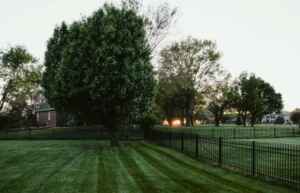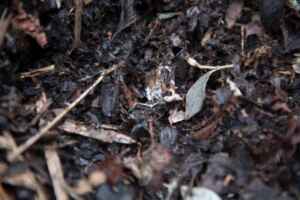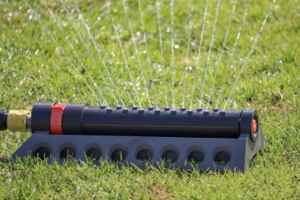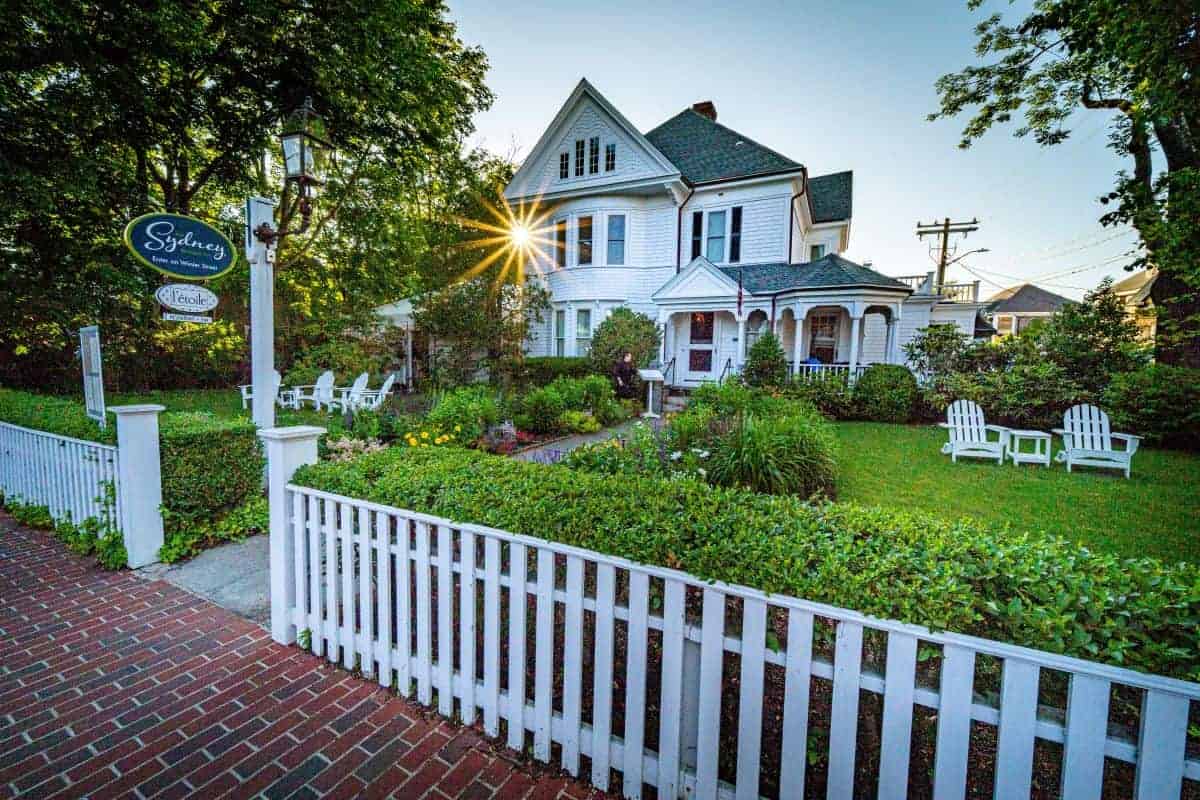The Beginner’s Guide To Planting Grass
Everyone wants a green lawn, but not everyone knows how to make it happen. When planting grass there are a few steps that need to be taken before jumping right in and getting started. In this article, I will go over just that. So if you’re a beginner, this post will be perfect for you! Of course, the most important aspect of planting grass is what you start with.
So, do you need mulch or starter seed when planting grass?
It depends on your starting conditions. If you have a bare dirt lawn that is completely barren and ready for seeding then it would be recommended to use a starter seed. However, if you’ve already got an existing seeded lawn, you’ll want to use mulch.
Grass seed and mulch serve different purposes so let’s go over both as briefly as possible:
- Starter seed is used for basically bare soil because it offers a higher germination rate than your standard grass seed. When seeding a new lawn from scratch it typically takes about 30 days for it to turn green.
- On the other hand, mulch functions as a sort of topsoil because it can be used on lawns that are already seeded. This doesn’t necessarily speed up the greening process, but it will help protect the seed from drying out.
In reality, there is no one right answer here. In some cases, you may even want to use both starter seed and mulch. To understand the difference between the two and when it’s best to use one or the other, let’s discuss further.
 What Is Starter Seed?
What Is Starter Seed?
First off, let’s talk about what starter seed is and why it’s used. As mentioned, starter seed is used for bare soil and it’s used to establish a new lawn. It’s quite similar to standard seed in terms of its composition and looks, but some slight differences set them apart – let’s go over those!
Starter seed is the same as standard grass seeds; however, it has a higher germination rate and can be used on bare soil. It’s especially useful if you want to establish a lawn faster than usual because during its first couple weeks of growth it will help protect against weed infestation.
The Pros Of Starter Seed
As I said in the beginning, there are pros and cons to starter seed and mulch.
- One of the greatest things about it is that it typically comes with a built-in fertilizer, which means you don’t have to worry about purchasing one separately. The fertilizer helps your seed grow right away so you will already see some results within 24 hours!
- Starter seed also performs very well in soil that is low in organic matter and it’s the perfect option for the warmer seasons because it has a very quick germination rate. Most starter seeds are pre-inoculated with nitrogen-fixing bacteria, which makes them much more beneficial to your lawn than standard seeds. This isn’t always the case though so make sure you read the label to be sure.
- If you want to ensure weed infestation doesn’t affect your lawn in the beginning stages then starter seed is a great choice. It has a much higher success rate than standard seed, which means you won’t have to worry about your soil being overrun with weeds.
The Cons Of Starter Seed
On the other hand, starter seed does have some cons. One of the biggest complaints about starter seeds is that they won’t save you time over standard grass seeds because their germination rate isn’t any different. There are times when it can be less effective depending on your soil conditions and location.
Another issue with starter seed is that it’s less durable than standard seed. Starter seed is usually used for lawns that are between half an acre and three acres, which means it typically won’t be suitable for bigger or commercial lawns.
What Is Mulch?
Now that we’ve got a better understanding of what starter seed is, let’s go over mulch. As I mentioned earlier, mulch is the perfect topsoil for seeded lawns because it can be used instead of starter seed when starting grass. It has pretty much all the same benefits as a standard seed but one thing that sets it apart is its composition and look!
Mulch typically comes in a bag and is made of fine materials, such as pine bark and sphagnum peat moss. It includes fertilizer and other organic materials that will slowly release over time to keep your lawn healthy and green during its entire growing season.
The Pros Of Mulch
Mulch has plenty of benefits, which is probably why it’s so much more popular than starter seed.
- Mulch requires little to no watering at all until the seeds have sprouted and established themselves. Instead, you can just spread it out over your soil and leave it for several days before you begin the watering process. It only needs to be watered every 3-4 days and will give your lawn a beautiful, lush look from the get-go!
- Another great thing about mulch is that it allows you to see how much water your soil actually needs. Once you begin maintaining your grass by watering it regularly then you will have a perfect idea of how often you’ll need to water it in the future.
- Lastly, mulch holds as much as 20 times its weight in moisture so you won’t have any problems with your grass drying out. This makes it a great choice for those that live in areas where it gets very hot or have had problems with their lawns developing dry spots before.
 The Cons Of Mulch
The Cons Of Mulch
While mulch definitely has a lot of pros, it does have a few cons as well.
- One of the biggest issues with this type of topsoil is that it’s typically much heavier than starter seed so you’ll need to spend more money on shipping costs to get it delivered. This isn’t always the case but it’s something to keep in mind.
- Another issue with mulch is that it can have a harder time germinating if the ground temperature doesn’t meet the required minimum. This means you will need to wait until your soil is warm enough before applying the mulch—this usually occurs around early spring when the weather begins to pick up.
- If you’re worried about your soil, then it might be a better idea to go with starter seed instead of mulch because it doesn’t need the same temperature requirements.
Proper Steps In Planting Grass
Now that you have learned which method is best for you, it’s time to plant your grass! Here’s a quick guide for either option.
How to plant grass when using starter seed:
- Get rid of old sod and any weeds or debris.
- Prepare your soil by adding sand or fertilizer if needed.
- Distribute the seed evenly and rake it into the topsoil with a flat hand rake.
- Keep your soil moist until the grass begins to grow (about 4-10 days). Then you can begin watering every other day. Continue this routine throughout the growing season for the best results!
How to plant grass when using mulch:
- Prepare your soil by removing any rocks or clumps and adding sand, fertilizer, or other organic material.
- Evenly distribute your grass seed.
- Lay your mulch out in a thin layer across the ground until the area is completely covered.
- Water your lawn every 3-5 days until germination occurs and the lawn has been established.
 Can I Use Both?
Can I Use Both?
One of the most common questions I get is whether or not you can use both mulch and starter seed when planting grass. Unfortunately, this isn’t a good idea because it means that you’ll have to wait for your grass seeds to germinate before applying the mulch on top of them. Since there’s no guarantee that they will even sprout then this method will take far too long.
Can I Just Plant The Grass By Itself?
In contrast to being asked if you can use both, some also ask if they can just skip these altogether. The short answer is no, you will still need mulch or starter seed for your grass to grow properly. This isn’t even just about the temperature requirements either because these are both designed to stabilize the soil during the grass’s beginning stages.
Which One Is Least Expensive?
In terms of affordability, mulch is the way to go here because it’s basically like having good topsoil and grass seed combined into one. The only difference then is that you won’t need as much starter seed since that will be included within the mulch bag.
When Is The Best Time to Plant Grass?
The best time to plant grass is in the early spring when the temperatures have started to rise and you’ve had a chance to start with some warmer weather. If you’re planting from seed then this is also when you will have better luck because they will be able to germinate without too many issues based on climate requirements.
And now you should have a clearer understanding of these two options and which one is best for you. If you still aren’t sure, you can ask someone at your local gardening store or nursery. Happy planting!

